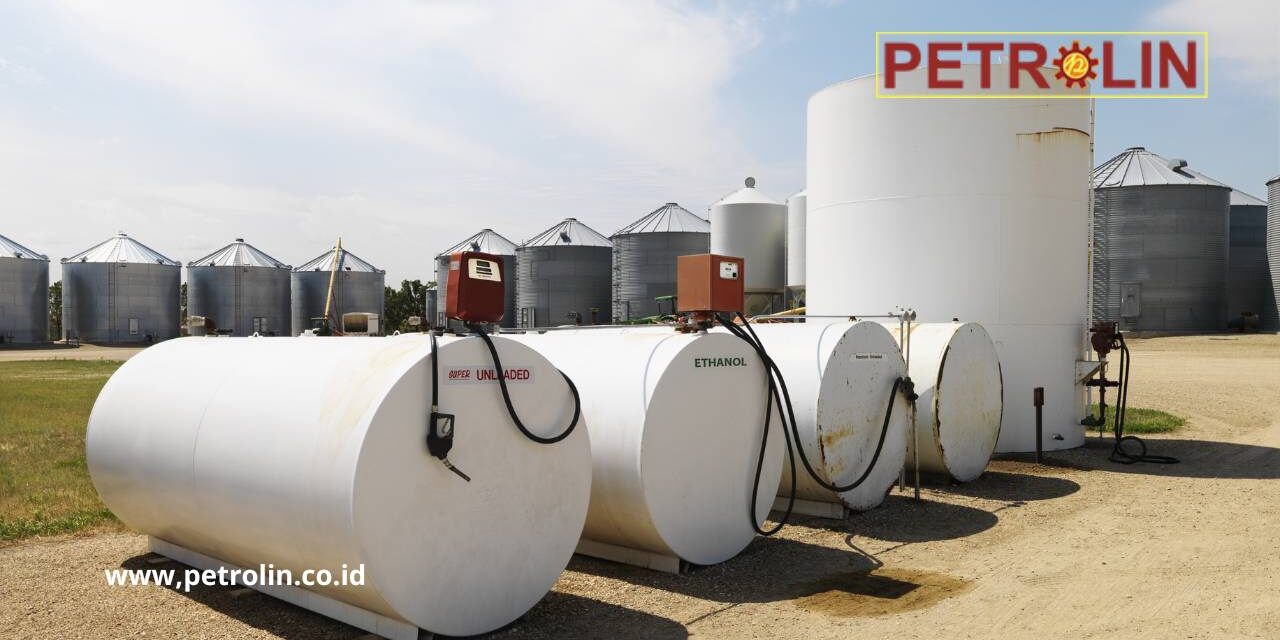Industrial Fuel (HSD)
Fuel plays a crucial role in industrial operations. During the production process, machines and industrial equipment require fuel that is efficient, cost-effective, and high-performing. One type of fuel commonly used in industrial settings is High-Speed Diesel (HSD). But what sets HSD apart from other types of fuel? Why do so many companies opt for HSD for their operational needs?
1. What is Industrial Fuel?
Industrial fuel is an energy source used in industrial processes to operate machinery, vehicles, and other equipment. This fuel not only plays a vital role in maintaining production efficiency but also helps reduce operational costs. Various types of fuel are used by industries, from fossil-based fuels like diesel to more environmentally friendly alternatives.
The type of fuel used is typically tailored to the specific needs of each industry, such as transportation, manufacturing, mining, and power generation. The right industrial fuel must be able to deliver optimal performance to industrial machines while ensuring cost efficiency.
2. Types of Industrial Fuel
Industrial fuel can be classified based on its origin, whether from fossil sources or renewable alternatives. Below are some common types of industrial fuels:
- Diesel (Diesel Fuel): This fuel is widely used in diesel engines for heavy vehicles and industrial machinery. One of its variations is HSD (High-Speed Diesel).
- Natural Gas: Natural gas is used in various industries, including power generation and manufacturing, due to its efficiency and environmental benefits compared to other fossil fuels.
- Biofuel: Made from plant-based sources like palm oil, biofuel is a more eco-friendly alternative. It is also being further developed for wider use.
- LPG (Liquefied Petroleum Gas): LPG is used in various industrial machines that require high-efficiency gas fuel.
3. What is High-Speed Diesel (HSD)?
High-Speed Diesel (HSD) is a type of fuel commonly used in industries, especially for high-speed diesel engines. HSD is derived from the fractional distillation of crude oil. The key characteristics of HSD include a high flash point and better combustion performance compared to regular diesel.
Some distinctive features of HSD to note:
- High Flash Point: HSD has a higher flash point than other types of diesel, making it safer for use in high-pressure machines.
- Low Sulfur Content: This makes HSD more environmentally friendly and compliant with emission standards in many countries.
- High Efficiency: With superior combustion quality, HSD delivers greater energy output with lower fuel consumption.
4. Differences Between HSD and Other Fuels
Although there are various types of fuel used in industries, HSD has several advantages that differentiate it from other types of fuel. Below are the differences between HSD and other fuels:
- HSD vs Regular Diesel: HSD offers higher combustion efficiency and burns cleaner than regular diesel. This makes it more suitable for high-performance engines and continuous use.
- HSD vs Biofuel: While HSD is more environmentally friendly than regular diesel, it still contains fossil fuels. On the other hand, biofuel comes from renewable sources and is more eco-friendly. However, in terms of performance, HSD is superior.
- HSD vs Natural Gas: HSD is more practical in terms of storage and distribution compared to natural gas, which requires special infrastructure. However, natural gas is cheaper and more environmentally friendly.
5. Advantages of HSD for Industrial Needs
Why is HSD the preferred choice for many industries? Here are some of its key advantages:
- Optimal Machine Performance: With cleaner and more efficient combustion, HSD enhances industrial machine performance and extends machine life.
- Environmentally Friendly: The low sulfur content in HSD makes it more suitable for stricter environmental regulations.
- Widespread Availability: HSD is widely available in the market, ensuring ease of fuel supply for industries.
- Cost Efficiency: While slightly more expensive than regular diesel, HSD’s high combustion efficiency leads to lower fuel consumption.
6. Applications of HSD in Various Industrial Sectors
HSD is used across various industrial sectors due to its characteristics and advantages. Here are some examples of its applications:
- Transportation: HSD is commonly used for heavy vehicles such as trucks, buses, and heavy equipment in logistics and construction sectors.
- Mining: In the mining industry, HSD powers large machines such as excavators and bulldozers.
- Power Generation: Diesel engines in power plants often use HSD because of its high combustion efficiency.
- Manufacturing: The manufacturing industry uses HSD for industrial machines that require high-speed diesel fuel.
7. Key Factors to Consider When Choosing Industrial Fuel
When selecting industrial fuel, several factors need to be considered:
- Energy Efficiency: Choose a fuel that delivers maximum energy output with minimal consumption. This will save costs in the long run.
- Supply Availability: Ensure the fuel selected is easy to procure and has a stable supply.
- Environmental Impact: Consider the emissions and environmental impact of using the fuel. HSD, with its low sulfur content, may be a better choice.
- Safety of Use: Some fuels require special handling, especially those that are highly flammable or explosive. Ensure the fuel chosen is safe for your industrial operating conditions.
8. Frequently Asked Questions (FAQ) About Industrial Fuel and HSD
1. What is HSD (High-Speed Diesel)?
HSD is a type of diesel fuel specifically designed for high-speed diesel engines, offering more efficient combustion and low sulfur content.
2. What is the difference between HSD and regular diesel?
HSD has better combustion performance, lower sulfur content, and is more suitable for engines that require high speeds and high pressure compared to regular diesel.
3. Why is HSD more expensive than regular diesel?
Although it is more expensive, HSD offers higher combustion efficiency, which means fuel consumption can be more economical in the long run.
4. Is HSD environmentally friendly?
HSD is more environmentally friendly compared to regular diesel because it has lower sulfur content, resulting in cleaner exhaust emissions.
5. In which industrial sectors is HSD used?
HSD is used in various sectors such as transportation, mining, manufacturing, and power generation, where high-performance diesel engines are required.
Conclusion
In the industrial world, choosing the right fuel is crucial to ensure efficient and cost-effective operations. High-Speed Diesel (HSD) offers several advantages, making it the top choice for many industries. With higher combustion efficiency, low sulfur content, and widespread availability, HSD meets the demands of modern industries.
However, it is essential for each company to consider factors such as costs, environmental impact, and specific operational needs before deciding on the most suitable type of fuel. HSD may not be the only option, but it provides a reliable solution for various industrial applications.
Read more also: Understanding Biofuels and Their Potential for a Sustainable Energy Future



